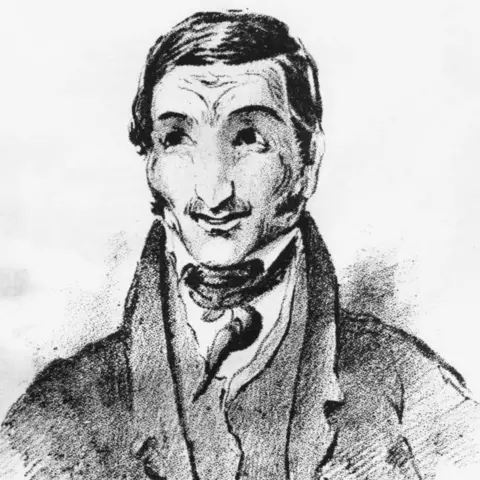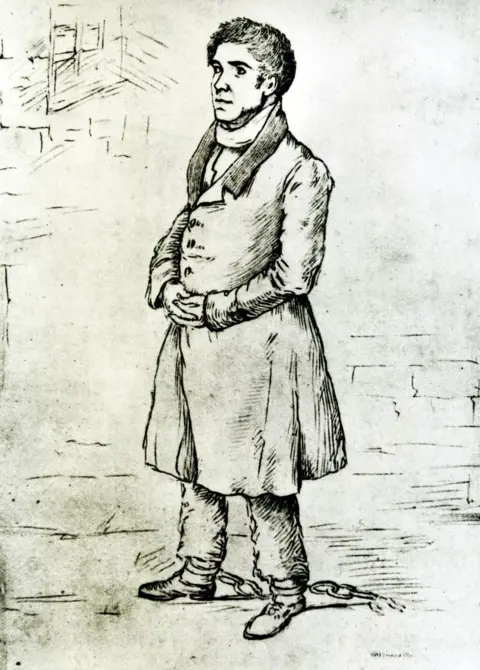Corpse shortage due to rise in Scottish medical students - report
 Getty Images
Getty ImagesA rise in the number of students studying medicine in Scotland has resulted in a shortage of cadavers, according to a report.
Prof Gordon Findlater, who is HM Inspector of Anatomy for Scotland, found that surgical colleges were having to cancel university training courses because the demand for bodies was so high.
In his 2023-24 report to government ministers, he noted that the University of Edinburgh in particular had a "serious problem" in meeting this demand.
According to the Scotland Deanery, which is responsible for training doctors, there were 5,930 medical students in the 2023-24 academic year.
This was up from 5,645 the year before and up from 3,928 in 2015-16.
In 2016 the Scottish government said it would increase the number of medical school places by 190 over five years as part of efforts to tackle a shortage in doctors.
Three years later it pledged to prioritise recruiting more medical students from Scotland over those from elsewhere in the UK, in the hope the move would ensure more doctors stay in Scotland after finishing their training.
Prof Findlater carried out inspections at a number of medical premises including those at the universities of Aberdeen, Dundee, Edinburgh, Glasgow and St Andrews.
Anatomy departments accepted 290 bodies over the academic year and rejected 178.
There were only nine more bodies accepted this year compared to the year before, when there was 285 fewer students.
Prof Findlater noted that all departments were working well and to a very high standard.
But he identified a "potential problem" as the demand for bodies was increasing due to rising student numbers.
He said: "This is already having an impact on the surgical colleges who are now having to cancel training courses due to medical schools having to meet their own needs first before that of the colleges."
In reference to the Royal College of Surgeons of Edinburgh, he said sourcing cadavers to meet the demand for courses was a serious issue.
He said: "This situation is not helped by the need of the five medical schools in Scotland having to meet the increased need for cadavers required to teach the increasing number of medical students they now have to accept."
The Scottish government has been contacted for comment.
How do you donate your body to science?
If donating your body to science is something you'd like to explore, universities advise you discuss it with your next of kin so they know what is involved.
You can contact a university, receive an information pack and complete a form declaring your wishes. You can also include your wishes in your will.
It is not possible for organ donors to donate their body to a university because they require bodies to be fully intact. (And it is worth bearing in mind everyone in Scotland is now an organ donor unless they opt out under a new system.)
In Scotland, anyone over the age of 12 can choose to donate their body to medical science - there is no upper age limit.
Under the Human Tissue (Scotland) Act 2006, universities can keep a body for up to three years, though they can keep body parts for longer if the donor gives their permission.
Universities will then take responsibility for cremation costs, but not burials which need to be arranged by next-of-kin. Institutions also hold an annual service for donors which family members can attend.
It is up to the five Scottish universities to make sure there are enough bodies for academic teaching.
A murky past
 Getty Images
Getty ImagesIn the 19th century, an increase in the number of anatomical students in Edinburgh led to a sharp rise in grave robbing to meet the demand for cadavers.
At the time, Scottish law placed heavy restrictions on dissections and only certain bodies, such as those of prisoners, could be dissected lawfully.
Then in the late 1820s, two men from Northern Ireland - William Burke and William Hare - began a murdering spree in order to sell bodies to the anatomist Robert Knox.
 Getty Images
Getty ImagesThe two killed at least 16 people for this purpose by suffocation, which meant they left no marks.
Knox would dissect the bodies as part of his lectures.
They were arrested in November 1828 after murdering their final victim, Margaret Docherty.
Burke was found guilty and was hanged while Hare testified against him and was allowed to flee.
A watchdog - the HM Inspector of Anatomy Scotland - was established in 1842 and has reported to the Scottish government ever since.
